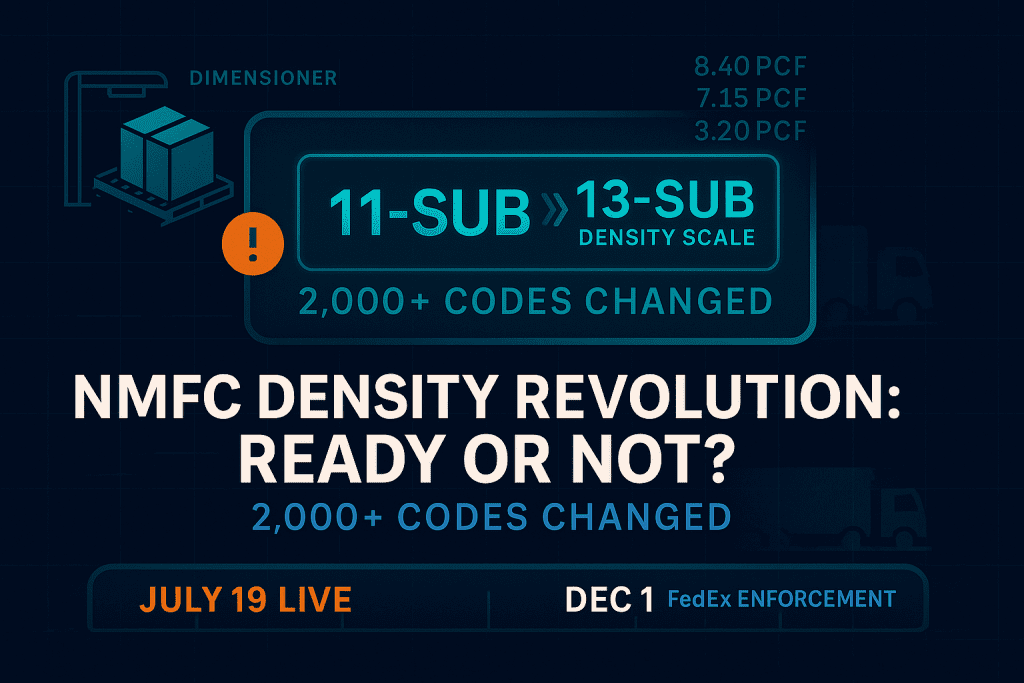Density Rules Now: What Saturday’s NMFC Overhaul Means For You
The freight landscape shifted on July 19, 2025, when NMFTA launched Docket 2025-1, a major revamp of the National Motor Freight Classification system.
Overview of the Overhaul
The 11-sub density scale is retired, replaced by a more detailed 13-sub density table based on pounds per cubic foot (PCF). Over 2,000 item codes have been reclassified. Descriptions were streamlined, and items needing special handling, liability, or stowability markings now stand out clearly. In short, it’s a cleaner, more data-driven freight classification system, if your operation is ready for it.
Learn more at the NMFTA NMFC resource.
Carrier Response
FedEx Freight has officially postponed enforcement until December 1, 2025, giving customers an extra five months to adapt.
Other carriers like A. Duie Pyle and Southeastern Freight Lines are cautiously preparing, ramping up dimension scanning and advising clients, but haven’t announced delays like FedEx.
Shipper Preparation
Under the new system, small errors, mere ounces or inches off, can bump your freight into a higher class, triggering inspections and fees. Shippers now need:
- Accurate dimensions and weight per shipment
- Updated freight rating processes aligned with the 13-sub density table
- Trained teams who know the new rules and how to apply them
What should you be doing now?
- Audit your common NMFC codes against the new density-based scale.
- Ensure your scanning tools (dimensioners, scales) are calibrated and producing precise data.
- Talk to your carriers, understand each one’s timeline. Don’t assume leniency.
- Train your team in operations and billing to identify and prevent misclassifications.
- Stay alert, Docket 2025-2 is scheduled for late August.
Final Takeaway
This isn’t just a technical update. It’s a shift in expectations across the freight industry. Docket 2025-1 is transforming how freight is measured, billed, and handled. And while some carriers are easing their customers into the change, the new rules are already live. Shippers who act now by sharpening measurement precision and communication will avoid costly errors down the road.




